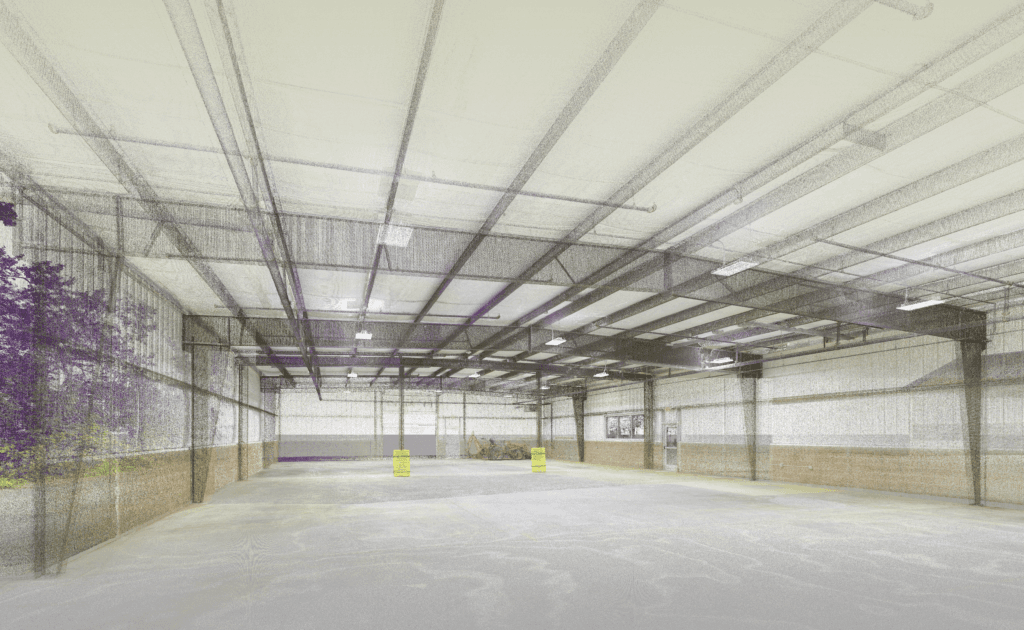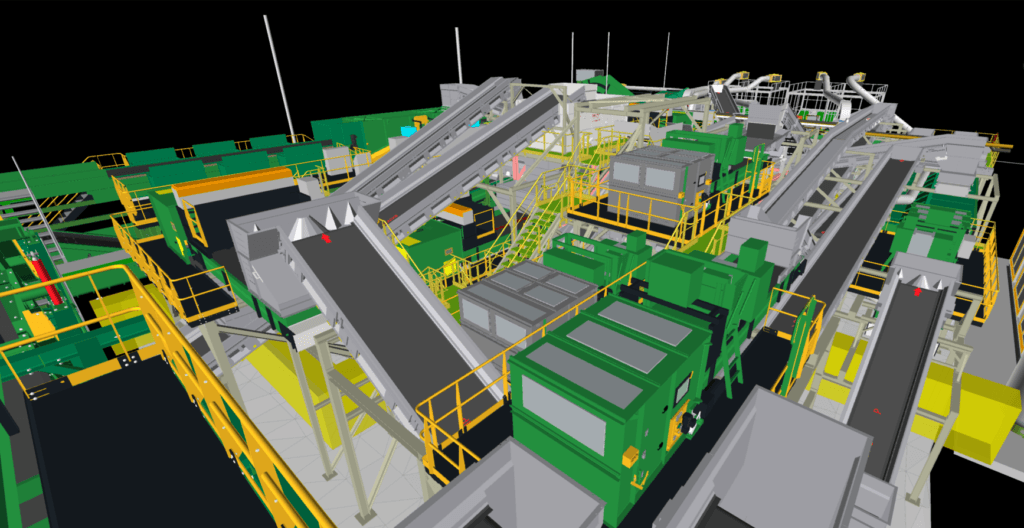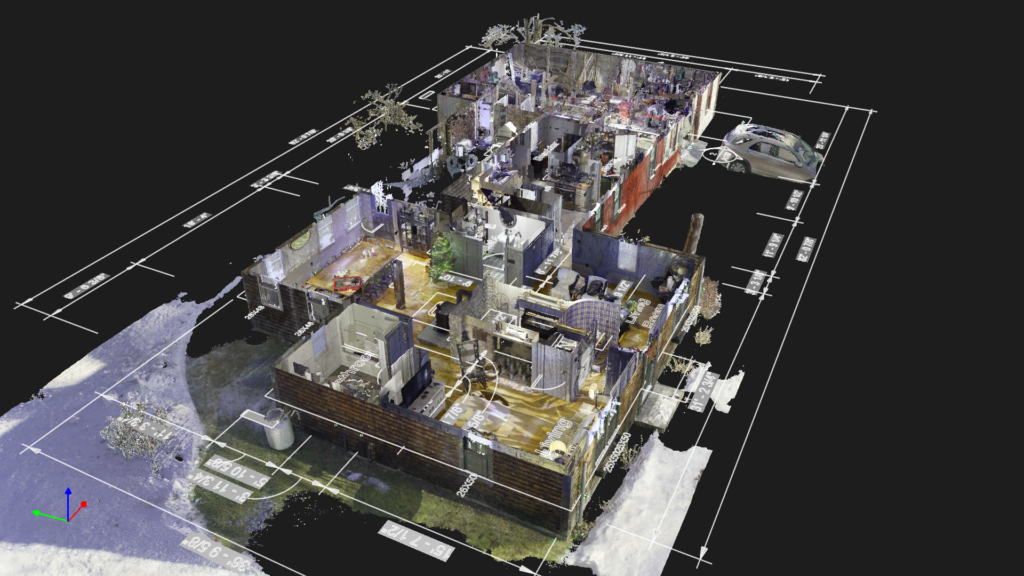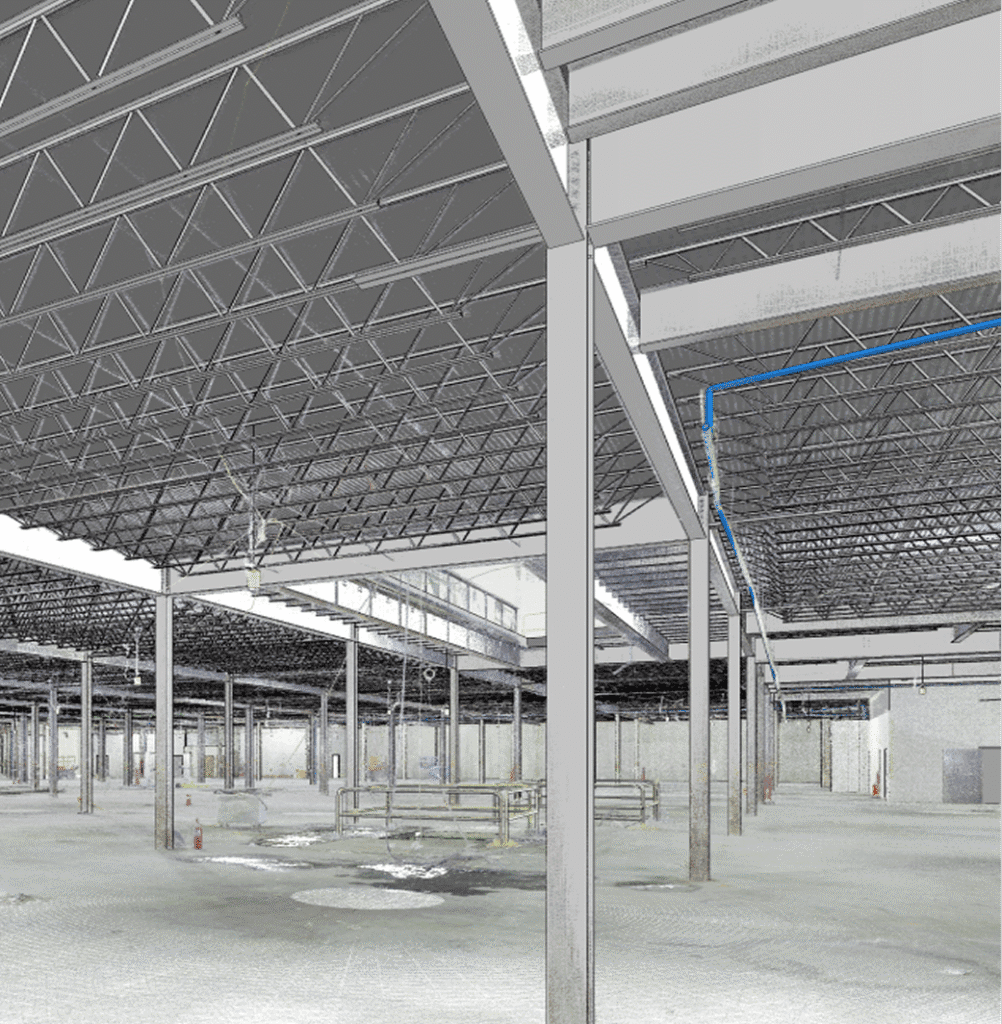Are you struggling with inefficiencies, unexpected delays, or outdated project documentation? If so, it’s time to explore Building Information Modeling (BIM) and 3D laser scanning. These technologies can transform your workflows, reduce project timelines, and cut costs. Whether you’re planning a remodel, reuse, repurpose, or retrofit, understanding Scan to BIM is your first step toward innovation.
In this guide, we’ll explain how Scan to BIM deliverables address common project challenges and set you up for success.
What Are Point Clouds and Revit Models?

A 3D point cloud is a precise data set captured by LiDAR (light detection and ranging) scanners, creating an accurate 3D representation of your project site. Think of it as a high-resolution photo but in 3D, with unparalleled accuracy for design and construction purposes.
A Revit model, on the other hand, is a detailed digital representation of your building, created using point cloud data. This model helps visualize, design, and coordinate construction projects effectively. Together, these tools eliminate guesswork and prevent costly errors on reuse, retrofit, or remodel projects.
With Scan to BIM, these two deliverables—point clouds and Revit models—become your ultimate tools for success. If you’re used to manual measurements or 2D plans, transitioning might feel daunting, but the benefits make it worth the leap.
Why BIM Tools Are Game-Changing

BIM tools like Revit models offer unmatched advantages:
- Streamlined Design Process: Collaborate seamlessly in one integrated environment.
- Improved Visualization: See designs in 3D and align them with real-world constraints.
- Enhanced Coordination: Detect and resolve clashes between systems (HVAC, electrical, etc.) early.
- Efficient Construction Planning: Optimize schedules, reduce labor costs, and minimize downtime.
- More Competitive Contractor Bids: With OAR’s guidance on BEP and contract language, reduce contractor markups and avoid costly change orders.
- Accountability and Compliance: Use reality capture and BIM for accurate documentation, reducing risks and protecting you from design discrepancies.
The Challenges of Skipping BIM
Relying on outdated methods can result in:
- Missed Opportunities: Errors and miscommunications are common with traditional workflows.
- Limited Accuracy: Manual processes can’t compete with the precision of digital tools.
- Higher Costs and Delays: Unforeseen issues often inflate budgets and extend timelines.
- Lack of Insight: Without a unified model, project coordination suffers, leading to inefficiencies.
The Power of Point Clouds for Onsite Accuracy

If incomplete documentation or inaccurate as-builts have slowed you down, point clouds offer a reliable solution. Capturing every detail of your building, they provide an accurate representation of real-world conditions.
Why Point Clouds Matter
- Exact Representations: Eliminate discrepancies by working with precise, up-to-date data.
- Streamlined Collaboration: Platforms like Cintoo make point clouds accessible even for beginners.
- Informed Decisions: Accurate data empowers better planning and execution.
When to Use Point Clouds and Revit Models
Point Clouds are ideal for:
- Retrofitting older buildings.
- Preserving historic structures.
- Projects with intricate geometries.
- Real estate purchases with outdated plans.
Revit Models excel in:
- Designing with new and existing elements.
- Collaborating with teams for 3D visualization.
- Conducting constructability analysis to resolve conflicts before construction.
How OAR Simplifies Your Transition to BIM
At OAR, we ensure that adopting BIM is straightforward and rewarding:
- Accurate Point Clouds: Our scans provide the precise foundation your projects need.
- Tailored Revit Models: We convert point cloud data into accurate Revit models that fit your requirements.
- Accessible Data: With web-hosted platforms like Cintoo, your team can easily access and use the data.
- Guidance Every Step of the Way: From consultation to execution, OAR partners with you to ensure a seamless transition to BIM technologies.
BIM is no longer optional—it’s the standard for efficient, cost-effective, and accurate project delivery. With Scan to BIM, you’ll streamline processes, reduce errors, and improve collaboration. Ready to modernize your projects? Contact OAR today to learn how we can help you harness the full potential of BIM.



